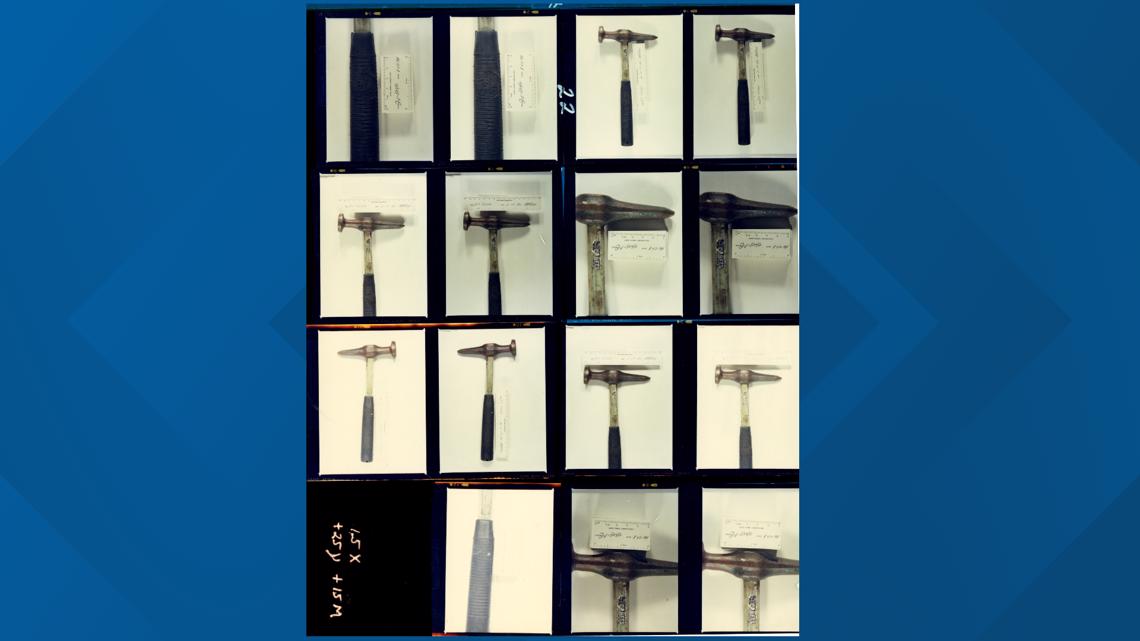JEFFERSON COUNTY, Colorado — The trial of a man in the January 1984 rape and murder of a Lakewood woman is a study in looking at evidence – in some cases the exact same items – from very different angles.
Alex Christopher Ewing, 61, faces multiple counts of first-degree murder in the slaying of Patricia Smith, an interior decorator who was beaten to death with a hammer in the townhome she was sharing with her daughter and grandchildren.
An Arapahoe County jury convicted Ewing last summer of killing Bruce and Debra Bennett and their 7-year-old daughter, Melissa, on Jan. 16, 1984.
He’s now on trial in Jefferson County in Smith’s murder, which occurred Jan. 10, 1984.


Remarkably similar circumstances exist between the two crimes.
Both the Bennett and Smith homes backed up to undeveloped land – and the killer is believed to have entered both homes through an open garage door. Both attacks are believed to have been carried out with hammers. Purses and wallets were dumped out and rummaged through in both cases. And both Smith and Melissa Bennett – who were both sexually assaulted – were left nearly nude on the floor, with her legs spread apart and a blanket covering her head.


DNA from the same person was recovered from semen found around the bodies of Smith and Melissa Bennett. A break in the two long-cold cases came in the summer of 2018 when a DNA hit led investigators to Ewing.
Evidence suggests Smith was surprised in her home as she ate a Wendy’s hamburger, and that her killer bludgeoned her with a hammer and sexually assaulted her.
DNA is at the heart of the prosecution – and the defense.
Prosecutors have asserted that the presence of Ewing’s DNA in semen found on Smith’s body, on carpeting beneath where she died, and on a blood-stained blanket that covered her head, is powerful evidence of his guilt.
The defense has asserted the lack of Ewing’s DNA on the murder weapon – an auto-body hammer – or on her clothing and boots believed to have been forcefully removed by the killer, is powerful evidence that someone else committed the killing.


Through the first three days of the trial, prosecutors have elicited detailed testimony about the evidence in the case – where it was collected, how it was stored, and what tests showed.
And defense attorneys have raised questions about how that evidence was handled, whether it was contaminated, and whether the killer’s DNA would be expected to be found on some of the items.
As a result, the same pieces of evidence have different implications for each side.
Take Patricia Smith’s clothing and boots. They were found strewn about near her body, and investigators believe her killer pulled them off of her – action that could have left behind DNA.
One possible implication that could be helpful to the prosecution: This was not a consensual sexual encounter. One possible implication that could be helpful to the defense: If the killer pulled the clothing and boots from Smith’s body, he could have left behind DNA.


Then there’s Patricia Smith’s purse and wallet – found dumped out on her bed after the killer apparently rifled through them.
One possible implication that could be helpful to the prosecution: The way the purse was found marks one of many similarities to the Bennett family murders. One possible implication that could be helpful to the defense: The purse and wallet are two more items where the killer could have left DNA.
Prosecutors have already suggested that one possible explanation for the lack of Ewing’s DNA is that the killer wore gloves during the attack.
Defense attorneys have not challenged the accuracy of the DNA results from tests on the semen but have not yet offered jurors an innocent explanation for how it got there.


Ewing faces four separate counts of first-degree murder in Smith’s death. One alleges he killed Smith after deliberation, each of the other three alleges that he killed Smith in the course of another felony – burglary, robbery and sexual assault.
Ewing had been arrested in Kingman, Arizona, 11 days after the Bennett killings and jailed on allegations that he broke into a home there in the middle of the night and attacked a man with a chunk of granite. While he was awaiting trial in that case, Ewing escaped while being transported to court for a hearing, and broke into a home in Henderson, Nevada where he beat a couple with a weathered ax handle.


Ewing was still serving a 110-year sentence for that attack when a 2018 DNA hit led investigators in the Bennett and Smith cases to him as a suspect in the long-unsolved Colorado cases.
If convicted of Smith’s murder, he faces life in prison with parole possible after 20 years.
Ewing is already serving three consecutive life sentences for the Bennett killings. In that case, he’s not expected to be eligible for parole for at least 45 years.
Contact 9Wants to Know investigator Kevin Vaughan with tips about this or any story: kevin.vaughan@9news.com or 303-871-1862.
SUGGESTED VIDEOS: Bennett family murders

